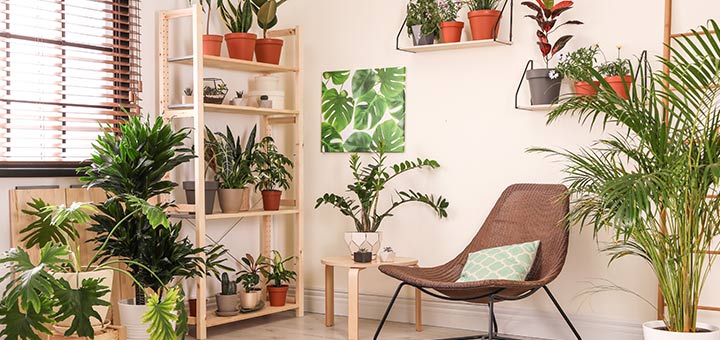Your home is meant to be a clean, toxin-free space of serenity. You shouldn’t have to struggle to catch your breath or ruin the health of your lungs in your own home. Air pollutants can easily make their way into your home, but you have to do something to prevent them from ruining your home’s air quality. Luckily, the solution may be as simple as purchasing indoor plants.
According to health experts, many indoor plants can help reduce the presence of volatile organic compounds (VOCs) in your home. The Lung Institute believes that purifying the air inside the home can not only improve lung health, but also reduce stress levels and improve mental clarity. Some people believe that indoor plants are not efficient for improving air quality, but many studies prove otherwise.
What Do Plants Clean From The Air?
Everyone remembers photosynthesis from chemistry class, right? If you don’t, photosynthesis is the natural process in which plants remove carbon dioxide from the air and then release oxygen. Plants also work to remove toluene, heptane, 3-methylhexane, and ethylbenzene, all of which are VOCs. If you want to improve air quality in your home, invite the following plants inside.
Snake Plant
Technically known as mother-in-law’s tongue, the snake plant thrives indoors. In fact, it’s nearly impossible to kill, so you don’t need a green thumb to keep it alive. Experts say that this plant is excellent for oxygen production and it works to remove benzene, formaldehyde, xylene, toluene, and trichloroethylene from the air. Snake plants release oxygen at night, so place one in your bedroom to contribute to better sleep. They do best near windows that are exposed to a lot of sunlight.
Spider Plant
Similar to the snake plant, the spider plant is quite resilient. If you don’t have a good history with caring for plants, this is the perfect one for you. Several studies revealed that it effectively absorbs formaldehyde, carbon monoxide, and benzene from the air. It’s perfectly safe for homes with pets or small children. Just make sure it’s in an area that gets sufficient sunlight.
Gerbera Daisy
The Gerbera Daisy is the most attractive indoor plant on this list. Known for its ability to produce high levels of oxygen at night, the Gerbera Daisy works to remove trichloroethylene and benzene from the air. Benzene is commonly found in fabric, so this plant is best for bedrooms or laundry rooms. Make sure that the plant gets a lot of sunlight and that the soil has proper drainage.
Aloe Vera
Aloe vera is great for sunburns and helps accelerate wound healing. People get too caught up with the gel, and they forget about the other benefits of the plant. Much like the Gerbera Daisy, aloe vera produces a lot of oxygen at night, helping to purify bedroom air for optimal sleep. Aloe helps to clear the air of formaldehyde and benzene, which come from certain paints or chemical-based cleaners. One thing to keep in mind is that you do not want to overwater it. That’s the only way to kill aloe vera.
English Ivy Plant
If you have chronic obstructive pulmonary disease (COPD), this is the plant for you. English Ivy helps to naturally relax the airways, reducing the amount of coughing for people with asthma, COPD, or bronchitis. Place several plants around your house, making sure to have one in your bedroom. English Ivy also works to reduce 94% of airborne mold particles, decreasing the risk of mold growth in your home. And…mold particles won’t damage your airways!

Vincent Stevens is the senior content writer at Dherbs. As a fitness and health and wellness enthusiast, he enjoys covering a variety of topics, including the latest health, fitness, beauty, and lifestyle trends. His goal is to inform people of different ways they can improve their overall health, which aligns with Dherbs’ core values. He received his bachelor’s degree in creative writing from the University of Redlands, graduating summa cum laude. He lives in Los Angeles, CA.

























